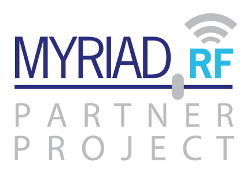Introduction
It’s typical for vendors to design their BTS to exceed all requirements of the standard by a certain margin, since they see this as providing a competitive advantage. However, this leads to extremely high prices for their equipment. Our goal is very different: we’re developing hardware with the optimal price/performance ratio.
UmTRX is designed as a multi-band and multi-standard transceiver, and to meet some of the stringent RF requirements of certain standards it requires different RF front-ends. For example, the requirements of GSM are very different to the requirements of LTE, and you cannot satisfy both at a reasonable cost.
UmSEL has been designed to enable UmTRX to meet the GSM 05.05 specification requirements for selectivity and blocking signals. UmSEL is a dual-channel receiver with preselector, diversity switch, conversion and 1st IF filtration (IF=360MHz).
If UmTRX is equipped with a UmSEL front-end, only a single ARFCN can be received by each receiver channel. This limits the wideband capabilities of UmTRX, but allows it to meet the selectivity and blocking signal requirements of the GSM standard.
UmSEL also implements temperature control for UmTRX and four ADCs for voltage control test points, such as output power detectors, DC/DC converters and so on.
UmSEL connects to the UmTRXv2 board via the digital control connector as a mezzanine. RF signals are interconnected with short U_FL/U_FL RF cables.

First batch of UmSEL samples.
UmSELv1 specification
PARAMETER | 900 MHz | 1800 MHz |
|---|---|---|
| Gain LNA to Switch output | 27 ± 1.5 dB | 27 ± 1.5 dB |
| Isolation LNA to Switch output | ~ 30 dB | 17-20 dB |
| Gain LNA to IF SAW output | 10 dB ± 1.5 dB | 10 dB ± 1.5 dB |
| IF SAW exact frequency | → | 359,95 MHz |
| Power consumption | → | 3.6 W (6V / 0.6A) |
GSM 05.05 requirements
Selectivity
The LMS6002D has programmable zero-IF LPF filters for bandwidths ranging from 1.5-28MHz. This is perfect for WCDMA/LTE signals, but is not ideal for narrow-band GSM signals.
GSM requires 270kHz filters and this is the most important issue addressed by UmSEL. To meet GSM 05.05 requirements, UmSEL uses high quality SAW filters at the 1st IF frequency.
Noise figure
The internal LNA1 and LNA2 of LMS6002D has HF=3.5dB and 5dB, which is pretty good.
For example, in the table below, you can see Rx front-end NF requirements for SNR=9dB and BER=10-3:
GSM900 | GSM900 | DCS1800 | DCS1800 |
|
|---|---|---|---|---|
| MicroBS | NormalBS | MicroBS | NormalBS | |
| Sensitivity, dBm | -100 | -104 | 102 | -104 |
| Noise factor, dB | 12 | 8 | 10 | 8 |
The LMS6002D is primarily targeted at Femtocell and Picocell base stations. However, we desire NormalBS with sensitivity -107dBm, NF <2dB, SNR=12dB and BER=10-6. This requires use of a high quality external LNA.
In addition the onboard diversity switch of the UmSEL can improve the dynamic sensitivity by up to 3dB when used with true diversity antennas.
Linearity
Receiver linearity requirements determined by the intermodulation products of two or more signals or IP3, that mean virtual intercept point.
According to GSM 05.05, for a NormalBS receiver the sensitivity should be only 3dB above the reference sensitivity, i.e. -104 + 3 = -101 dBm when two blocking continuous signals with 0.8MHz and 1.6MHz offsets are applied to the BS RF input. For GSM900, allowed blockers up to -43dBm, and for DCS1800 up to -49dBm.
Therefore the input IP3 for NormalBS with GSM900 should be at least -8dBm, and with DCS1800 at least -17dBm.
For the LMS6002D we find that IIP3=-1dBm at medium gain, but drastically falls at high gain.
Higher IIP3 of the LMS6002D can be reached if the internal LNAs are bypassed and it is used with external high IIP3 LNAs.
As a result of this the UmSEL uses high linear dual-stage LNA ICs: MGA-13116 with IIP3=+5dBm for GSM900, and MGA-13216 with IIP3=+10dBm for DCS1800.
LO phase noise
Phase noise plot measured at 528 MHz:
Offset, Hz | 1k | 10k | 100k | 400k | 600k |
|---|---|---|---|---|---|
| Noise 1/Hz, dBc | -97 | -100 | -115 | -125 | 133 |
It should be possible to improve on this.


